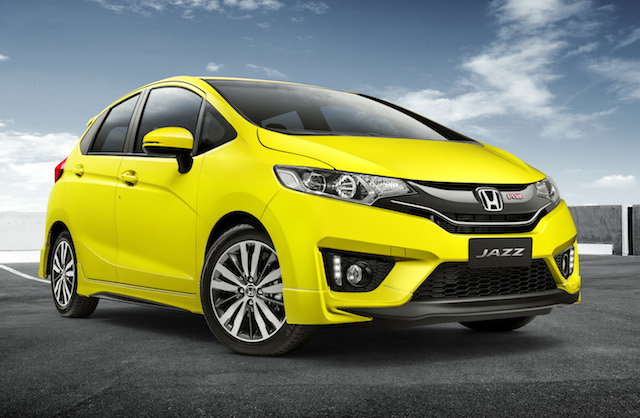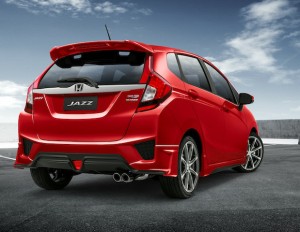
One of the strengths of the previous Honda Jazz was the way the seats folded every which way – one of its weaknesses was its jiggly ride.
The so-called ‘magic seats’ in the new third-generation Jazz are still as flexible, folding 18 different ways. Take it as read that tumbling the seats one way and the other is a standout feature. It’s as if Honda’s interior designers used a rubik’s cube to work things out.
But its engineers relied on something less perplexing to fix the fidgety ride. A valve change in the shock absorbers and a tweak here and there in the spring settings helped that.
That’s the first impression of the five-door hatchback after a brief drive around Auckland. The second was of a small car chockablock with equipment, all seven variants: S, RS, RS Sport, RS Mugen.
It begins with the entry-level S Jazz with its 10 cupholders. Standard kit includes 15-inch alloys, reversing camera, sat-nav, Bluetooth, touchscreen, hill start assist, a five-year warranty with unlimited mileage, a first for Honda.
 The RS adds a radar-based brake system that might help you stop before hitting the car in front in traffic, as long as you are not exceeding 30km/h. It also gets 16-inch alloys, sports steering and a paddle shifts on the steering wheel.
The RS adds a radar-based brake system that might help you stop before hitting the car in front in traffic, as long as you are not exceeding 30km/h. It also gets 16-inch alloys, sports steering and a paddle shifts on the steering wheel.
The RS Sport gets all that and an aerodynamic sports kit. The RS Mugen (Mugen is Honda’s performance arm) adds more aerodynamic garnish, including optional 17-inch alloys. But the extra kit eats into the number of cupholders – all the RS-badged models get seven.
Like the previous model, Jazz comes with the choice of 1.3-litre or 1.5-litre petrol engines, in this case lighter, stronger and more reliable, says Honda. It claims a plus-20 per cent boost in economy from both engines, or as much as 150km more from the outgoing car’s 1.3-litre unit’s 40-litre fuel tank.
The base S Jazz gets the 73kW/119Nm 1.3-litre, an Atkinson Cycle unit. Honda and Toyota use Atkinson Cycle engines in hybrids. Such engines help fuel economy but are leaner on torque. Mating them to an electric battery pack gets the best of both worlds, one reason why Honda will introduce the hybrid Jazz at a later date. The RS range gets a 97kW/155Nm 1.5-litre direct-injection four.
Power from both engines goes to the front wheels via a snickety-snick six-speed manual or six-step continuously variable transmission (CVT). Such units have traditionally worked better linked to smaller-capacity engines than bigger units.
Honda has quite a carpark of generation-one and -two Jazz models in New Zealand. Roughly 20,000 are on the road here, made up of those carrying the NZ-new Jazz badge and the used-import Fit handle.
New Jazz comes in 10 colours and is priced between $23,700 and $30,900. It goes on sale later this month under the creative catchline “It’s Jazz as” – music to the ears of the Honda faithful.

